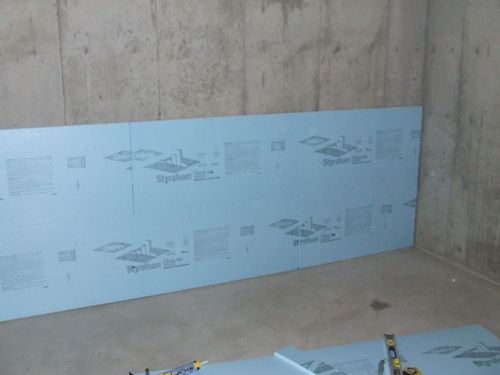Bathroom Insulation Guide
by Mark Row
Head to Toe Insulation
Besides insulating your bedroom, living room or attic space, note that bathrooms are equally important. Although you may think that you do not spend that much time in your bathroom why you believe it is not worth insulating, because it would only present an additional, unnecessary expense, this can be of great importance for the overall thermal performance of your home. The main reason is that when assessing how energy efficient your home really is, you need to take into account the entire building construction that is the construction of your house or apartment. Only then will you have a complete picture on how insulated your home is. Besides bathrooms are connected to the other rooms within your home meaning that there is air (and thus heat and cold) exchange which can result in lower (or higher) temperatures in the rest of your home if the bathroom is not properly sealed. These are some of the reasons we offer a bathroom insulation guide.
The first thing you will need to do is thoroughly inspect your bathroom and detect potential problems such as excessive moisture present, cracks and holes in walls that need to be repaired, any wiring or plumbing anyhow damaged. Once you have done with this, you will need to assess what type and how much insulation you actually need and make the purchase accordingly. You can do this either online or by visiting any of the stores specialized in selling insulation products. You could also consult a professional on which type of bathroom insulation would suit you the most. When you get through these steps, it is time to begin with installation part.
Insulating Bathroom Walls
Probably the weakest points within your bathroom that need insulation the most are your walls. They are under the direct influence of the condensation and water vapor which is very likely to occur in a bathroom, but also prone to degradation due to all the plumbing going through the walls, creating hollow spaces within the wall that can drastically influence the temperature of the wall and the rest of your bathroom. Note that, prior to adding any insulation you will have to take care of any excessive moisture present and identify the cause of the problem since it can affect the effectiveness of the insulation added on the long term, regardless of whether you have opted for some kind of moisture resistant bathroom insulation product. Before installing the material, make sure that your walls are sound and dry.
The next step will depend on the type of insulation material you have purchased. If you have consulted a professional or someone who has experience on the matter, you were probably advised to go either for rock wool or some type of rigid insulation since they are the most adequate choice for these areas and they are very easy to install.

Adding rock wool insulation to your bathroom walls includes building up a timber frame that is laid on the wall and filled with rock wool. You will notice that rock wool is tightly packed into plastic containers and decompresses once taken out. Although the material may seem light and prone to tearing, do not let it mislead you since it is woven out of very dense and resilient fibers that will not deteriorate easily. However, it is important not to compress it during insulation but to gently place it within the frame, making sure that all potential gaps between the frame and the material or the bathroom wall and the material are properly sealed. This will not take much of your time but will increase the effectiveness of the material. Now, as before mentioned, you will also have to make sure that the condensation which is undisputedly present in any bathroom area will not speed up the deterioration of the entire bathroom insulation construction.
Although this type of insulation has some moisture resistant characteristics, they are usually not enough when exposed to constant water vapor. The problem can be deal with by adding some vapour membrane, being a vapor control layer that will protect the material and the wall from excessive moisture present. A vapor barrier (the simplest one being some plastic sheeting) is simply added on top of the insulation material and tightened to the construction by using a staple gun. Now, if you want to protect your home from excessive heat, then it should be facing the exterior of the wall and if cold is your problem, then the installed water vapor barrier should be facing the interior.
Finally, if your walls need any heavy repairs, this might be the right time to not only repair your pipe but also add some bathroom pipes insulation. This will not only affect the thermal performance of the wall but also minimize the condensation risk. You could even minimize your costs by, for example, using the rock wool insulation leftovers and just wrap around bathroom pipes.
Compare insulation products and pick the best one from our wide seletion of insulation materials for your bathroom improvement project, or seek advice from our experts. You are welcome to leave a comment or share the article.

















































































































